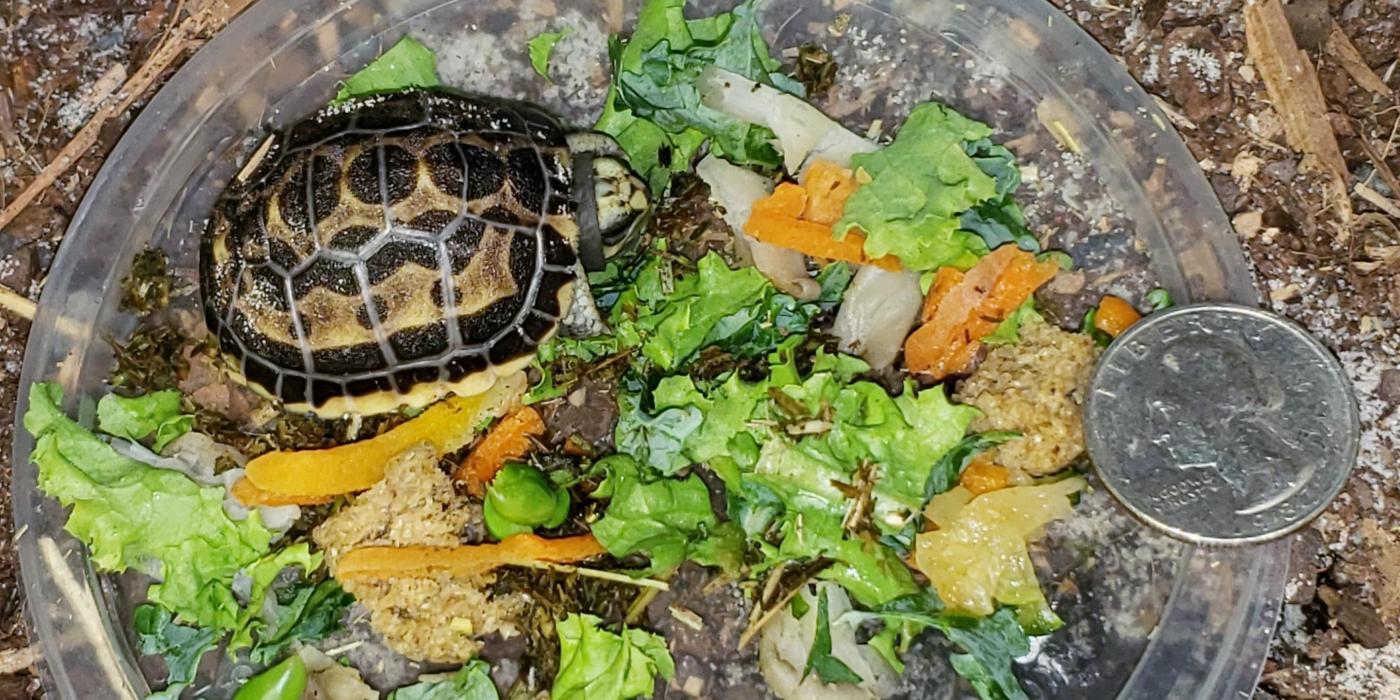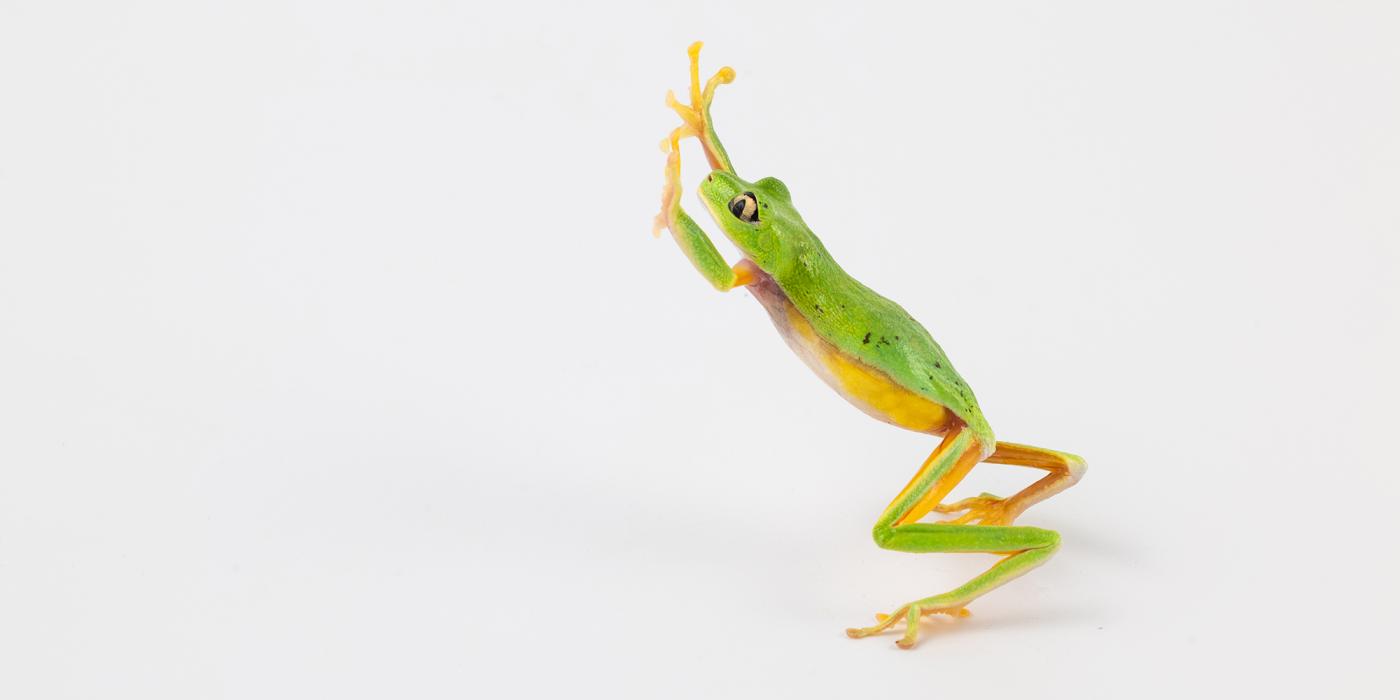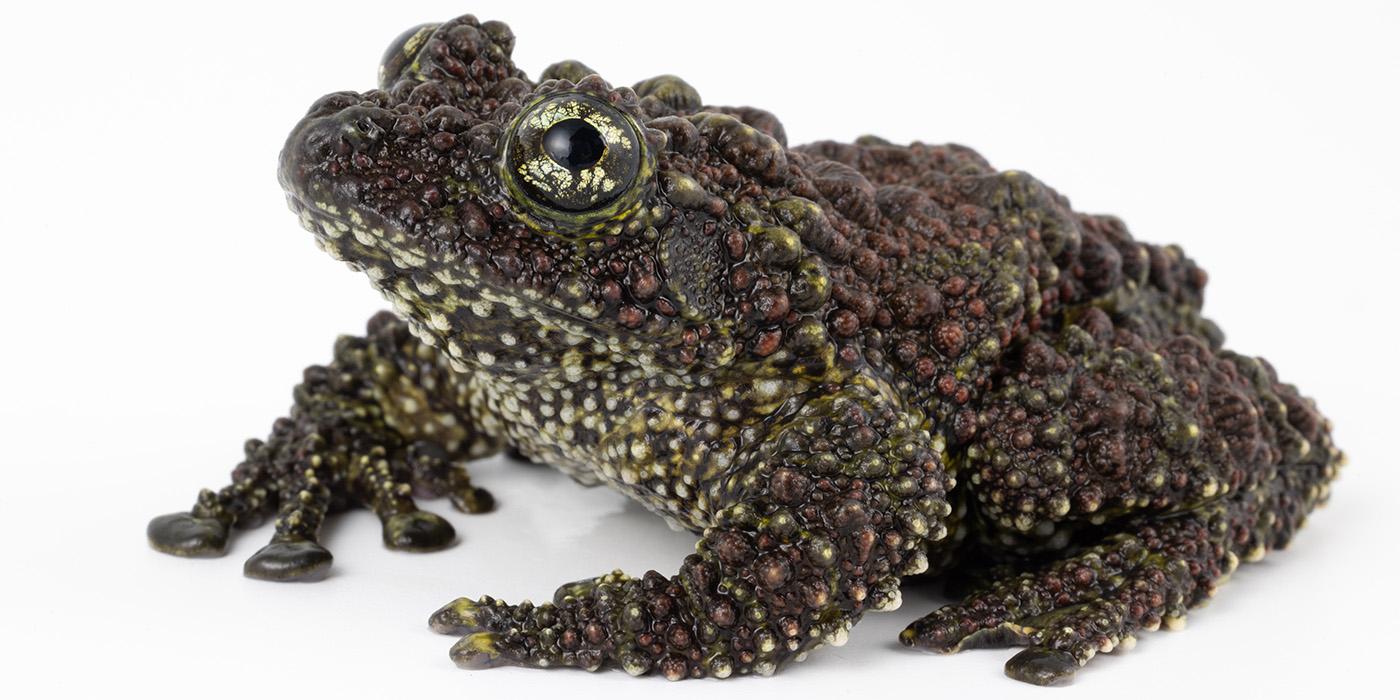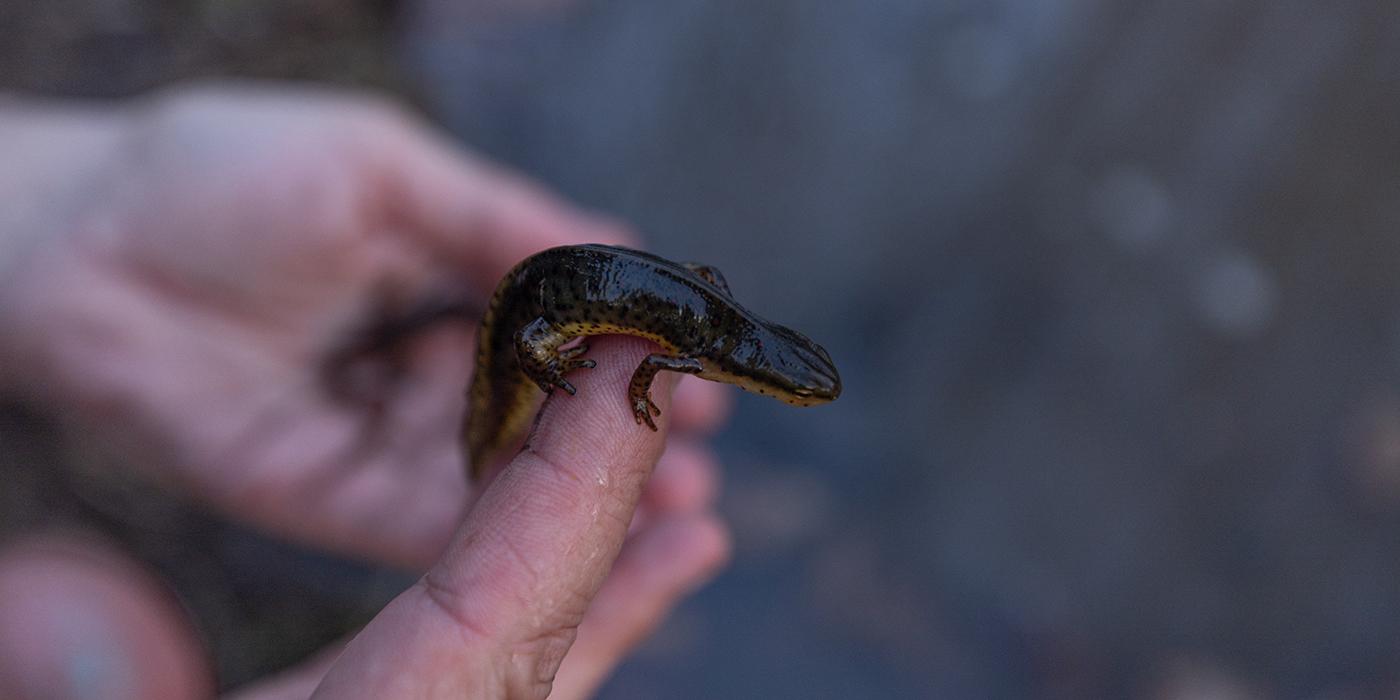Welcome, Spider Tortoise Hatchling!
Spider tortoises are small in stature, stealthy and a critically endangered species worth saving. I have always had a fondness for this tortoise, but I didn’t quite realize exactly how stealthy they could be until the morning of July 5. As keeper Robin Saunders and I conducted our morning rounds at the Reptile Discovery Center, we stood in front of the spider tortoise enclosure, mesmerized by a ‘surprise’ new addition to our Zoo family. Among the adults was a teeny, tiny tortoise—slightly larger than a quarter—exploring their shared habitat. (In comparison, the adults are about the size of a grapefruit.)
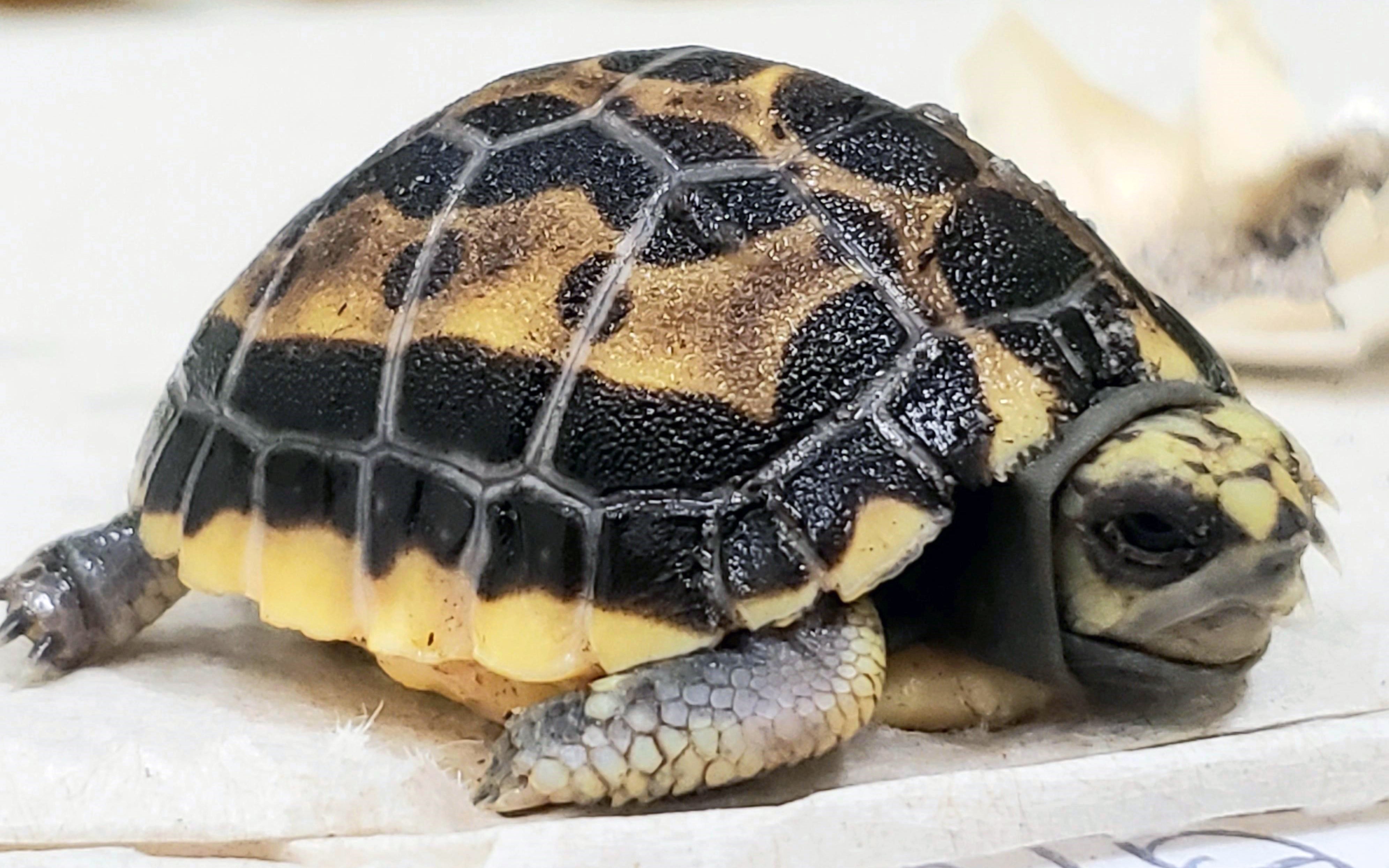
At first, neither of us could believe what we were seeing. For one, it had been five years since our last successful hatching. Following the death of her mate, our female had lived alone and was only introduced to her new exhibit mates within the last year. Another complicating factor is the conditions needed for successful incubation. Spider tortoise eggs can be difficult to hatch in human care, in part because they must be incubated, cooled, and incubated again during the embryo's development.
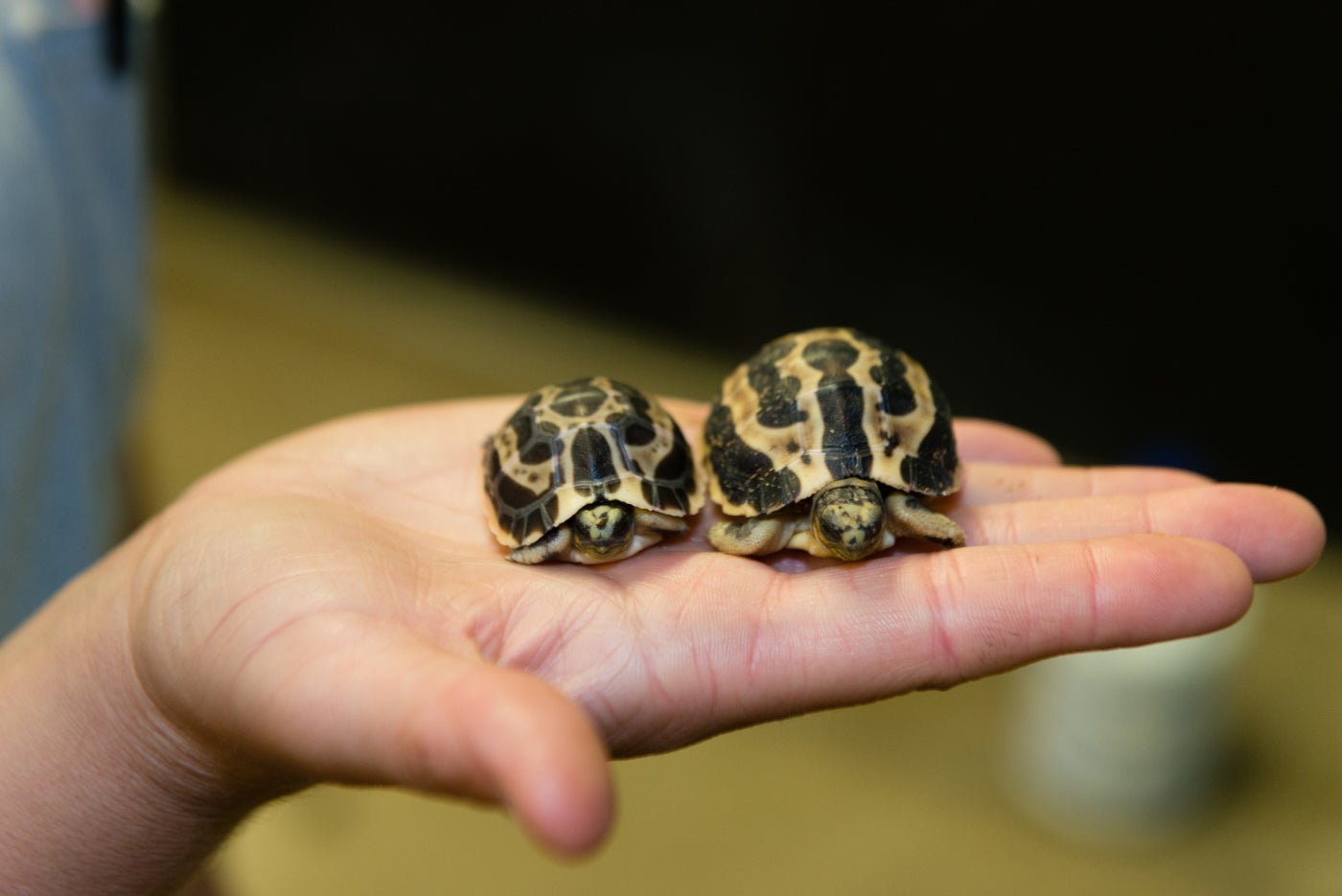
In the past, we went to great lengths to create these “diapause” conditions. This year, it seemed, our female was one step ahead of us. After breeding with one of the males, our crafty mother chose to lay her egg at a spot in the habitat where the temperature is cooler. It just so happened that this area provided enough temperature fluctuation to successfully mimic diapause!
Mom hid her egg under a potted cactus, obscuring the keepers’ view of it. Upon seeing our new arrival, our team reviewed our records. Even though we did not observe egg laying or hatching first hand, there were some clues in our notes that spider tortoise breeding was afoot: digging, breeding attempts and an increase in activity. Piecing together our timeline, we suspect that mom laid this egg sometime in January 2020.
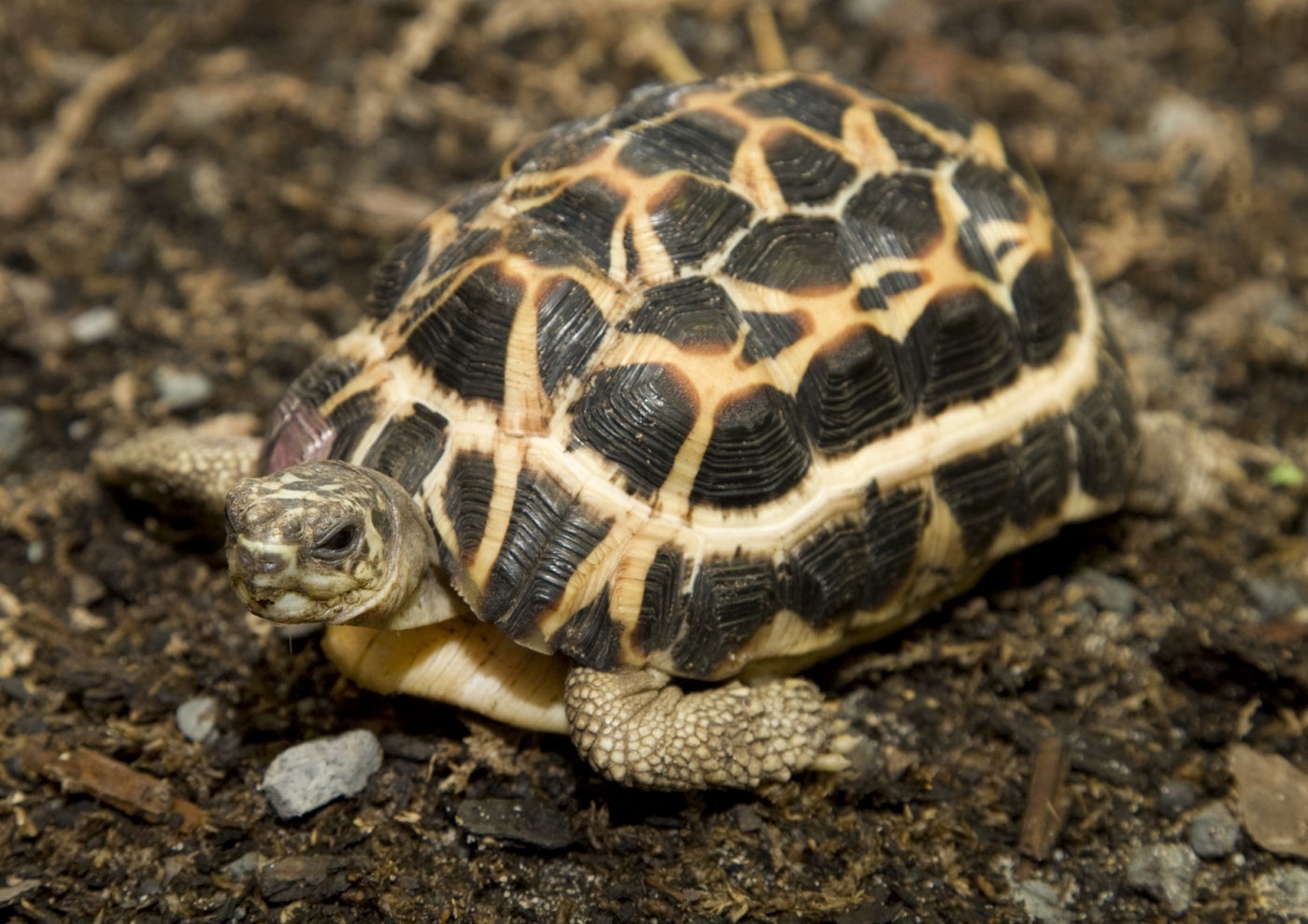
When spider tortoises hatch, they’re on their own. Neither parent provides for their young. Keepers step in to feed the hatchling a miniature meal of salad and mushrooms—the tortoises’ favorite food. Two times per week, we soak the hatchling in a shallow bowl to help it stay hydrated. So far, it appears to be doing well and spends it day sleeping, digging in the sand and hiding out of view. One detail that we won’t know for a while is the hatchling’s sex. Spider tortoises show no sexual dimorphism when they are young, and it may even be 12 to 15 years before we confirm if it is a male or female.
Every new hatchling is cause for celebration. Most of the population data suggests that spider tortoises will go extinct from the wild in Madagascar within the next 100 years. This species faces an uncertain future in its native habitat, Madagascar’s unique Spiny Forest. The Spiny Forest is a harsh ecosystem which takes highly specialized species to survive in it. The ecological changes and alterations to this ecosystem by humans is causing a steady population decline. In addition, the small size of these tortoises and their beautiful shell patterns make them popular to illegally collect for the pet trade and food markets around the world.
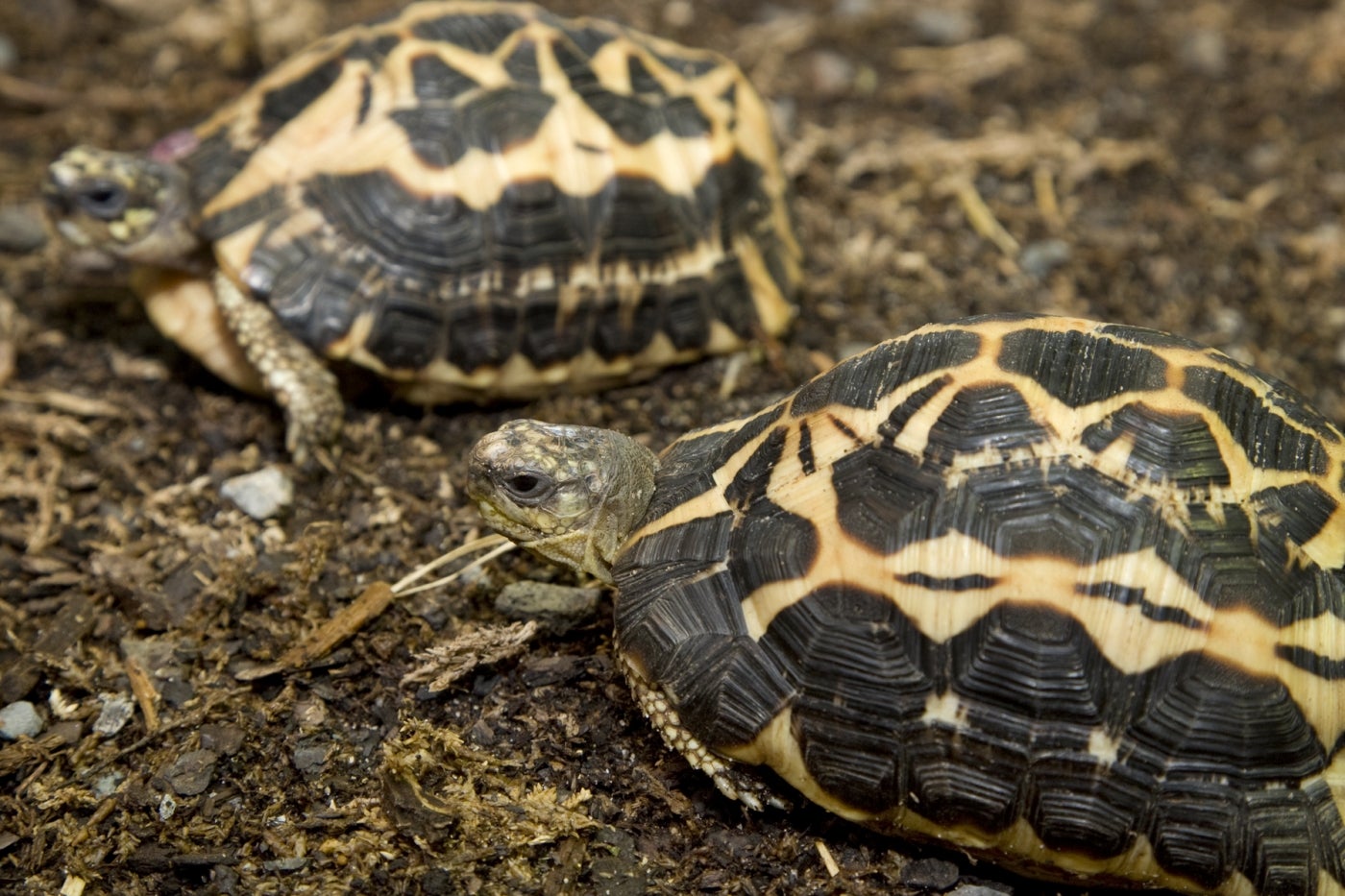
Every single species of plant and animal on this amazing planet exists for a reason and should have the opportunity to live and thrive. Thankfully, our partners at the Turtle Survival Alliance Madagascar are working in that country and with zoos around the world to protect and rebuild the dwindling spider tortoise population. However, it will take everyone’s involvement in one way or another to keep species like the spider tortoise from becoming extinct. You can help these tortoises, too, by refraining from purchasing animals or animal products that were taken out of Madagascar. The arrival of the Zoo’s ‘surprise’ spider tortoise hatchling is reason to be optimistic that we can change their future on this planet for the better.
This story appears in the September 2020 issue of National Zoo News. The Reptile Discovery Center is temporarily closed to help prevent the spread of COVID-19. Although spider tortoises are currently off exhibit, visitors can see the (much larger) Aldabra tortoises in the outdoor habitat. Plan your visit!
UPDATE Dec. 21, 2020: Please note that the Zoo is temporarily closed as a public health precaution to help prevent the spread of COVID-19.
Related Species:
